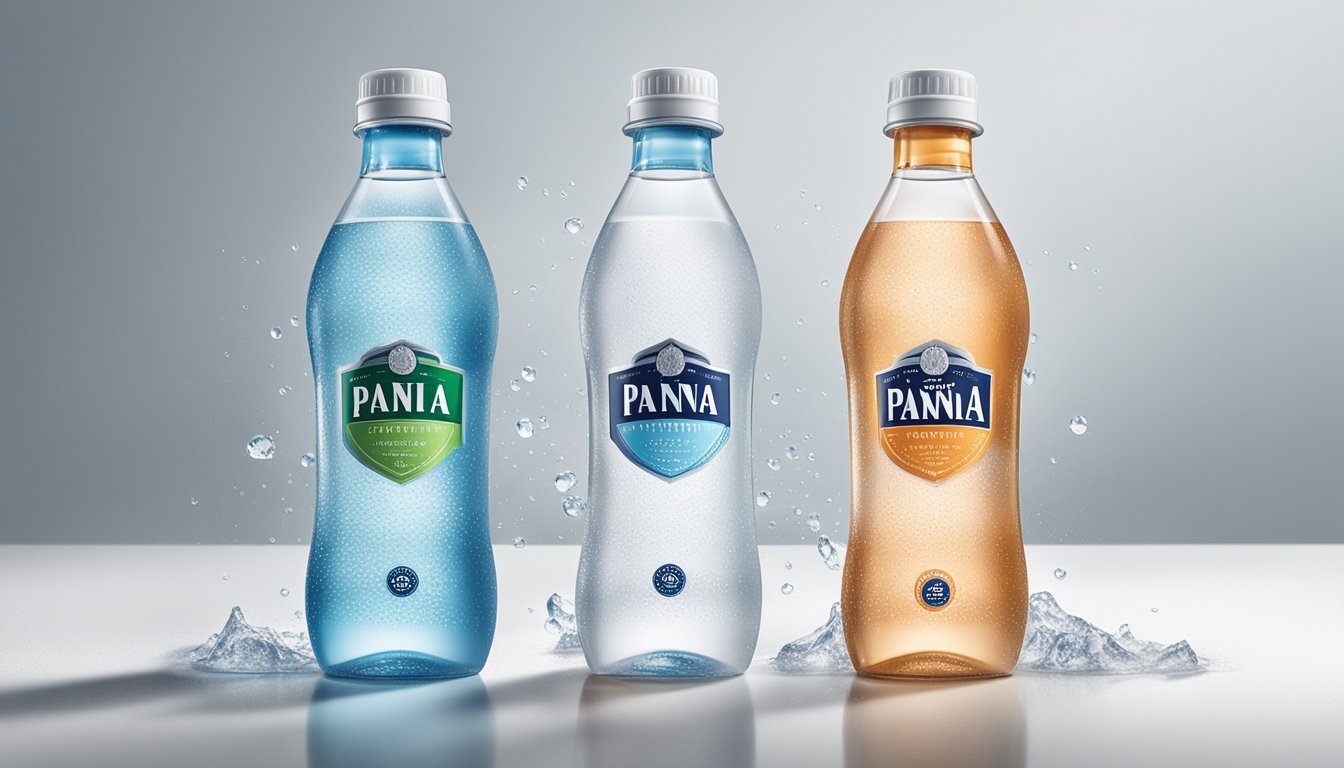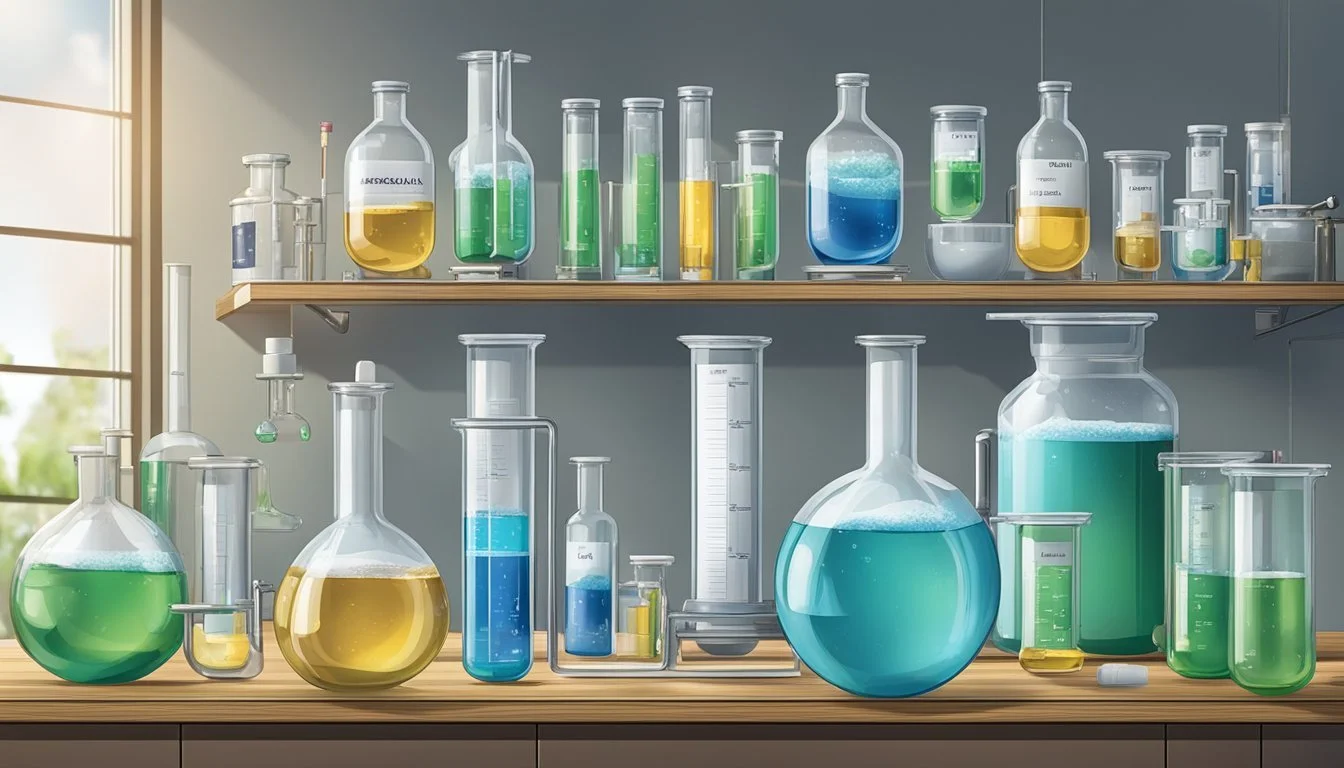Acqua Panna vs. Essentia
A Comparative Analysis of Bottled Water Quality
Choosing the right bottled water can be a surprisingly nuanced decision, with numerous brands offering different minerals, pH levels, and taste profiles. Acqua Panna and Essentia stand out in the crowded marketplace, each bringing a distinctive approach to their products. Acqua Panna, hailing from Italy, is known for its smooth taste and naturally occurring mineral composition, sourced from the Apennines mountains. The water isn't just about hydration; it's a testament to Italian heritage and is often preferred by gourmets and chefs for its ability to complement fine dining without overpowering the palate.
Essentia, on the other hand, represents a modern approach to bottled water. It is ionized and boasts a high pH level of 9.5, making it an alkaline water. This characteristic, according to the brand, contributes to a crisp and clean taste along with purported hydrating benefits that surpass ordinary water. The brand's rise to the top-seller position in the premium bottled water segment within natural foods retail channels signifies a strong consumer following who believe in the benefits and distinctive taste of Essentia's offering.
While Acqua Panna focuses on its natural source and tradition-steeped processing, Essentia emphasizes its scientifically-driven enhancement process and health-oriented branding. Consumers often make their choice based on taste preference, perceived health benefits, and the ethos or story behind the water—a decision that may vary considerably from one individual to another. Both brands have carved out their own space within the premium water market, but which one is better? That often depends on what the consumer is seeking in their bottled water experience.
Historical Context and Source
The legacies and sources of Acqua Panna and Essentia differ significantly, with one emerging from the heart of Italy and the other from innovation and purification processes. These profiles offer a glimpse into their individual stories and the importance of their origins in the competitive bottled water market.
Origin of Acqua Panna
Acqua Panna traces its roots to the stunning landscape of Tuscany, Italy. Known for its prestigious heritage, Acqua Panna Natural Spring Water is sourced from a natural spring located at Villa Panna. The landscape surrounding the source has become iconic for its pristine quality and historical association. The water collects in an underground aquifer beneath the Tuscan hills and is naturally filtered, giving it a distinctive composition.
Essentia: Brand and Source
In stark contrast, Essentia is not tied to a historical natural spring. Instead, it is a testament to modern purification technology. Beginning with water from any source, Essentia employs a proprietary ionization process to enhance the water, striving for optimal hydration. This process includes purifying the water, adding a unique blend of electrolytes, and then removing bitter-tasting ions, giving Essentia a distinct taste and quality.
Historical Significance of Bottled Water
Bottled water holds a special place in the history of human consumption. While Acqua Panna is embedded within this tradition, heralding from the traditional source of a Tuscan natural spring, Essentia represents the evolution of bottled water, where scientific advancement in water purification takes precedence. Together, they illustrate the breadth of the bottled water industry: one venerating its history and source, the other celebrating innovation and science.
Scientific Analysis of Water Quality
In evaluating Acqua Panna and Essentia bottled waters, it's crucial to scrutinize their pH levels, mineral content, and purity to determine which one may offer better quality.
pH Level Assessment
Acqua Panna: Typically sourced from the hills of Tuscany, Italy, Acqua Panna boasts a neutral pH level that is close to 8. Its distinct taste is often attributed to this balanced pH, which aligns with the needs of those seeking non-alkaline water.
Essentia: Marketed as ionized alkaline water, Essentia has a pH level of 9.5 or higher. This is due to the proprietary process that includes purification, electrolytes addition, and an ionization process to raise pH, catering to consumers looking for alkaline water with its associated benefits.
Mineral Content and Health Benefits
Acqua Panna is known for its richness in minerals like calcium and magnesium, which can contribute to a person's daily dietary needs. This natural mineral water is appreciated for its health benefits, including hydration and essential electrolytes replenishment.
Essentia, on the other hand, contains added electrolytes like sodium for taste, but its primary selling point is hydration through its alkaline properties. While some studies suggest ongoing benefits of alkaline water, evidence for widespread health benefits is not conclusive.
Examining the Purity: Contaminants and Filtration
Acqua Panna undergoes natural filtration as it flows through the underground layers of rock, which contributes to its purity and absence of contaminants. The brand highlights the quality of being a natural resource without the need for elaborate purification methods.
Essentia water goes through a rigorous process involving reverse osmosis and additional purification steps to strip water of impurities, including heavy metals, fluoride, and chlorine. Its process ensures a high level of purity, and the water can be labeled as electrolyte water that targets hydration and taste enhancement.
By analyzing key quality indicators such as pH levels, mineral content, and purification processes, consumers can make informed decisions about which bottled water may align better with their personal health goals and taste preferences.
Taste Profile Comparison
When comparing bottled waters, particularly Acqua Panna and Essentia, discerning consumers focus on two primary characteristics: the unique flavor profiles and the level of alkalinity which influences taste.
Flavor Characteristics of Acqua Panna
Acqua Panna, known for its source in Tuscany, offers a smooth and crisp taste profile. It has a neutral pH level which contributes to its soft mouthfeel, and it is often described as having a naturally sweet flavor characteristic of many natural spring waters. The taste is subtle, without a heavy mineral presence, making it a choice for those who prefer a clean and light taste in their bottled water.
Essentia's Flavor Profile and Alkalinity
Essentia stands out with its high alkalinity (pH level of 9.5 or higher), which it achieves through ionization. This process not only increases its pH but also leads to a distinctly smooth and silky taste that its drinkers find refreshing. The elevated pH level is claimed to help neutralize acidity in the body, though these health claims extend beyond the scope of taste per se. Essentia's flavor is often described as bold and slightly sweet, and is designed to be distinguishable from other bottled waters.
Environmental Impact
When comparing Acqua Panna and Essentia, it is crucial to consider their impact on the environment, including their bottling processes, efforts in water source conservation, and packaging sustainability.
Bottling Process and Sustainability
Acqua Panna emphasizes its commitment to sustainability by using recycled materials in its bottling process. The company aims to reduce its carbon footprint and become carbon neutral, aligning with environmental priorities. In contrast, Essentia focuses on high-quality water purification and ionization, but its environmental policies center around providing clean, crisp water rather than emphasizing the bottling process's sustainability.
Water Source Conservation
Essentia sources its water sustainably, ensuring that its bottling practices do not deplete natural aquifers. This commitment helps maintain the natural water cycle and minimizes the brand’s environmental impact. Acqua Panna takes a similar approach, safeguarding its water source in Tuscany to prevent overexploitation and preserve the regional ecosystem for future generations.
Packaging and Recycling Initiatives
Both Acqua Panna and Essentia have initiated programs aimed at increasing the use of recyclable materials in their packaging. Acqua Panna has made strides with its glass bottles, which cater to the premium market and are 100% recyclable. Essentia, while primarily using plastic bottles, encourages recycling to reduce landfill waste. However, neither brand has matched the packaging innovation seen with boxed water alternatives like Just Water, which boasts a significantly higher proportion of plant-based packaging, and Aquafina, which introduced an aluminum can option to reduce plastic usage. The commitment to recycling is a critical component of both companies' environmental strategies, acknowledging the importance of not only emergency preparedness but also day-to-day sustainable practices.
Consumer Experience and Accessibility
In the debate between Acqua Panna and Essentia, consumer experience, market availability, and value for money are pivotal. Packaging design also plays a vital role in influencing customer preference.
Brand Presence in Marketplaces
Acqua Panna has a strong presence in the global marketplace, often found in the bottled water sections of upscale restaurants and gourmet food retailers. It's also available online through platforms like Amazon and in select supermarkets.
Essentia has penetrated the U.S. market more aggressively, especially in natural food channels. Being the top-selling premium bottled water and ionized alkaline water brand, Essentia is readily available at major retailers such as Walmart, as well as numerous online marketplaces.
Price Comparison and Value for Money
Acqua Panna is priced higher, denoting its premium market position. A single liter typically costs between $2 and $3. On the other hand, Essentia Ionized Water is more accessible price-wise, offering competitive prices for its health-oriented demographic, with a liter often falling under $3.
Example Pricing:
Brand Retailer Price (per Liter) Acqua Panna Amazon ~$2.50 Essentia Walmart ~$2.00
Packaging Convenience and Design
Acqua Panna is recognized for its elegant glass bottles, offering a sophisticated option for dining experiences. However, glass is less convenient for on-the-go hydration compared to plastic.
Essentia focuses on the health-conscious consumer with its BPA-free plastic bottles. Its design is practical for those leading active lifestyles, ensuring ease of use and transportability. The brand's commitment to a neutral pH and electrolyte enhancement is reflected in the clear labeling that speaks to its health benefits.
Comparison to Alternatives
When comparing bottled waters such as Acqua Panna and Essentia, it’s pivotal to consider their distinctions from tap water and how they stand against other bottled water brands in the market.
Acqua Panna and Essentia vs. Tap Water
Acqua Panna sources its water from the springs of Tuscany, Italy. It is a natural mineral water with a naturally alkaline pH of 8.8, known for its soft taste and low Total Dissolved Solids (TDS) levels of 150 mg/L. It contrasts with tap water, which may vary in TDS and pH levels depending on the local source, and is typically treated by municipalities to meet Environmental Protection Agency (EPA) standards, including filtration and addition of minerals.
Essentia, on the other hand, offers ionized alkaline water with a pH of 9.5. The company uses a proprietary process called "Hydro-7" to purify its water, which differs from common municipal treatments of tap water. This process removes impurities and then adds a blend of electrolytes, contrasting with tap water that may contain various added compounds such as fluoride, depending on local regulations.
Standout Features Against Other Bottled Brands
Against other bottled brands, Acqua Panna presents its unique origin story of being bottled at the source in Italy, where the water travels through mineral-rich hills and gains its signature taste and mineral composition. Many other brands, like Nestlé Pure Life, source their water from various locations, which might not have the same mineral richness as the natural springs in Tuscany.
Essentia’s distinction lies in its ionization process, setting it apart from both distilled and purified waters found in brands like Nestlé and even from natural mineral or spring waters such as Perrier, which is sourced from the French Alps, and The Mountain Valley from Arkansas. While some brands might emphasize their exotic sources, like Voss from Norway or lava-filtered waters from Mexico, Essentia focuses on the technological enhancement of its water to achieve a specific taste and alkalinity.





